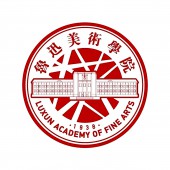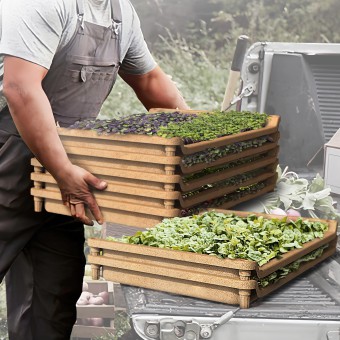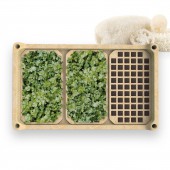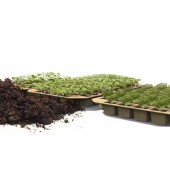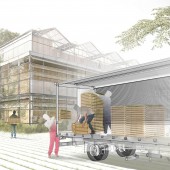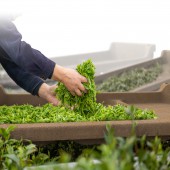DESIGN NAME:
Luf
PRIMARY FUNCTION:
Seedling Trays
INSPIRATION:
In China's vigorous implementation of the rural revitalization strategy, the scale of agricultural production has expanded, leading to an increase in crop residues. With the advantages of high yield and degradability of loofah, it has been widely used in the field of seedling cultivation along with the "C2C" concept. Large-scale nursery bases are mechanized facilities and are not suitable for rural areas. Natural materials used in plant cultivation are finally back to nature.
UNIQUE PROPERTIES / PROJECT DESCRIPTION:
The development model of converting plastic seedling trays "from cradle to grave" to loofah biodegradable trays "from cradle to cradle". Break the loofah and hot-press glutinous rice glue to synthesize new materials. The trays can be interspersed up and down and a single person can carry more than five trays at a time. Transplanted into the soil and degraded into nutrients. The chassis can be reused or dried for crops, and the loofah seeds can also be recycled to continue seedling cultivation.
OPERATION / FLOW / INTERACTION:
Establish a closed cycle metabolic process of "production-recovery-remanufacture&
quot; of raw materials. The chassis of the whole seedling can be carried by a single person according to the weight of more than 5 trays, which are divided into three independent trays. After the plant seedlings are mature, they are transplanted into the soil, and can be cut as a whole or along the dotted line to be transplanted as independent individuals. After transplanting, they will soon decompose into the soil.
PROJECT DURATION AND LOCATION:
The project started in May 2022 and finished in January 2023 in Lu Xun Academy of Fine Arts.
|
PRODUCTION / REALIZATION TECHNOLOGY:
Prepare 50 parts of loofah fiber, 15 parts of bio-based green adhesive, 1 part of curing agent, and 2 parts of ethanol diluent in the weight ratio, and heat the prepared materials in the mold at 20 °C to 0.2 MPa for 60 min. The finished product has been tested for load-bearing, water seepage, stretching, and degradation. After the loofah is crushed and combined with other green raw materials, it can form a block shape, which meets the basic standards for seedling trays.
SPECIFICATIONS / TECHNICAL PROPERTIES:
Width 800mm x Depth 490mm x Height 70mm,The size of the hole plate is 540 mm*280 mm. Vegetable seedlings generally use 50 to 288holes. The shape of the holes is round or square, generally between 0.6 and 1.2 mm.
TAGS:
Loofah, seedling tray, transportation, rural revitalization strategy, sustainable design
RESEARCH ABSTRACT:
(1)Clean up the loofah fiber to remove impurities (2) Dry the loofah fiber (3) Add binder and diluent to the dried loofah fiber and stir fully to make a premix (4) Mix well The final premix is added with curing agent and then fully stirred as a preparation (5) Heat the preparation in the mold at 20°C to 0.2MPa and pre-press for 60min (6) Heat at 20°C and press at 40MPa for 10min The finished product is obtained.
CHALLENGE:
Applying the loofah material of agricultural waste to seedling trays, from the perspective of circular design, it is necessary to meet the functionality while conforming to the sustainable design theory, and give full play to the social, cultural and commercial values of agricultural waste in the design. New rural construction under the strategy of rural revitalization. It should be explored whether this material can be directly applied to 3D printing to make more finished products.
ADDED DATE:
2023-02-21 05:03:41
TEAM MEMBERS (3) :
Designer: Du Heli, Designer: Jia Zhuohang and Designer: Xue Bomu
IMAGE CREDITS:
Image #1: Designer Du Heli, Jia Zhuohang and Xue Bomu, Luf, 2023
Image #2: Designer Du Heli, Jia Zhuohang and Xue Bomu, Luf, 2023
Image #3: Designer Du Heli, Jia Zhuohang and Xue Bomu, Luf, 2023
Image #4: Designer Du Heli, Jia Zhuohang and Xue Bomu, Luf, 2023
Image #5: Designer Du Heli, Jia Zhuohang and Xue Bomu, Luf, 2023
|
